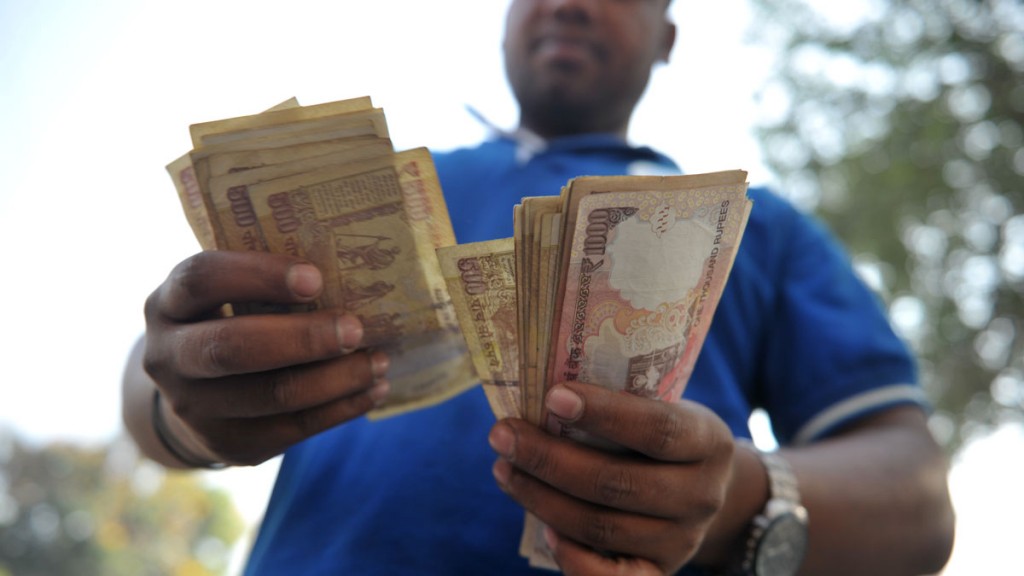
Tough stuff from India’s prime minister, Narendra Modi. Yesterday he announced that, with immediate effect all Rs500 (about £6) and Rs1,000 (£12) notes were to be cancelled. Four hours after the announcement, the cash turned into what all fiat money is at heart – just bits of paper. Indians can still deposit them at banks until the end of the year and use them in hospitals and pharmacies. But that’s it. They are no longer a medium of general exchange: 86% of India’s paper money just isn’t money any more.
At the same time, rules have been introduced to restrict people from drawing more than Rs2,000 a day from ATMs (rising to Rs4,000 on 19 November). The plan here is twofold – or so says the Reserve Bank of India. The first part is to get the huge numbers of counterfeit notes out of circulation. And the second is to force transactions into the legal economy by stopping cash transactions. This should squash the black economy – and of course boost tax revenues.
Wanting all this stuff makes sense: less than 2% of people in India currently pay income tax (working in cash and avoiding tax is normal), many property purchases are done in cash, and, of course, having a system heavily skewed to cash makes bribery and general corruption easier than it would otherwise be.
But will cancelling notes in this way help? It could make a start.
Clearly, those with large amounts of cash are now going to have to figure out how to legitimise it (although those with very large amounts are highly unlikely to be holding it in Rs1,000 notes). They will either have to open bank accounts and deposit them or sell them at a discount to those who will.
And the scheme will push more people into opening bank accounts – which will at least get them inside the financial system and more likely to be taxable (and controllable via monetary policy) in the future.
Critics will say that this has been done twice before (1946 and 1978) and that there was no noticeable reduction in India’s cash economy or corruption. But today is different. 30 years ago bank accounts weren’t straightforward to open or use and the idea that cash wasn’t required on a daily basis was obviously absurd (transferring took days, ATMs and debit cards barely existed, etc). That’s not the case any more.
With that in mind, the key change here might not be the cancellation of the notes themselves (the state intends to produce new Rs500 and Rs2,000 notes soon ) but the limit on ATM withdrawals, something that will force those who spend more than £50-odd a day to start working within rather than outside the banking system (50% of Indians don’t have a bank account).
“I have a family. There is no way that is going to be enough,” restaurant owner Hussain Petiwala said of the Rs4,000 day limit in the Wall Street Journal. “How do you survive?”
The Reserve Bank of India’s answer to that is likely to be a simple one: stop using cash. Go digital.
I also suspect that the rest of the world’s central bankers are looking longingly at India today: the US Federal Reserve, the Bank of England and the European Central Bank would all love to be able to get up in the morning and ban all high-denomination banknotes (although for them it is less about the black market and more about making negative interest rates work). Let’s hope India’s move doesn’t give them any ideas.